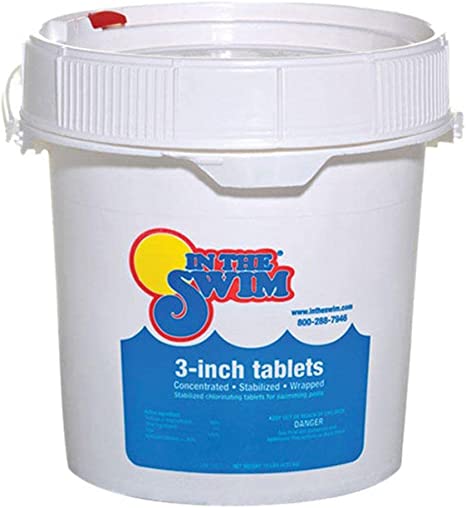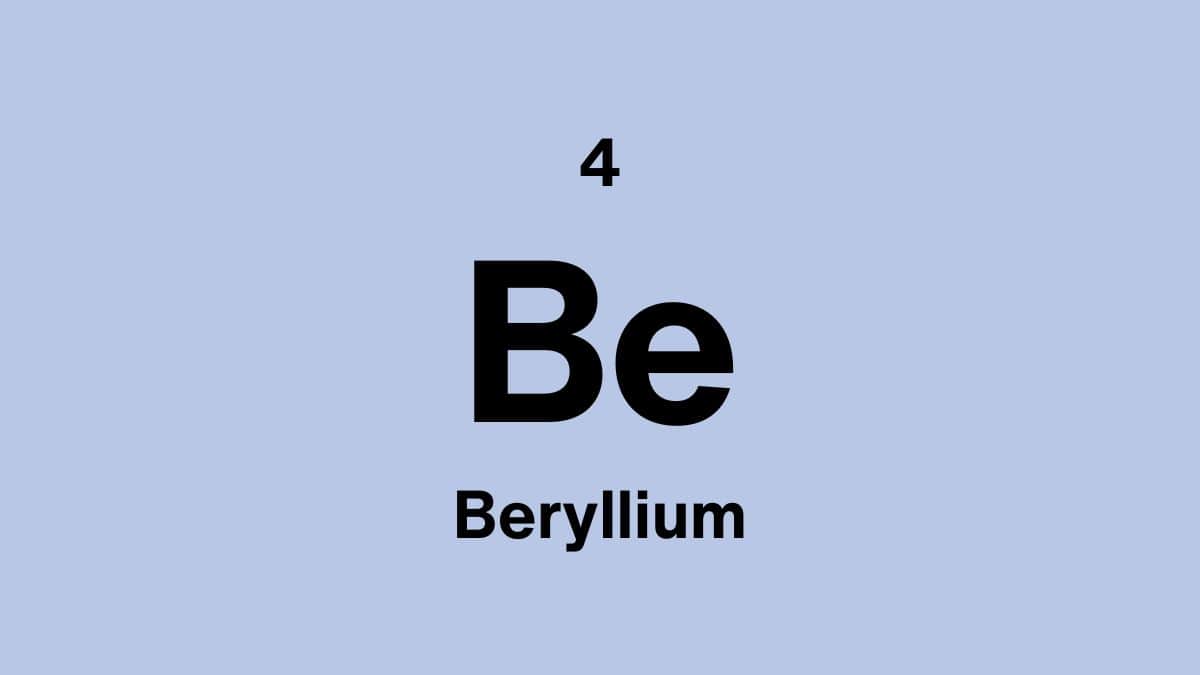Is tap water that smells like chlorine safe to consume?
Yes, in most cases, tap water that smells like chlorine is safe to consume. Chlorine can be smelled in water at concentrations of as low as 1mg/L, which is far below the regulated maximum of 4mg/L. Governments regulate the concentration of chlorine in drinking water meticulously and would rarely raise the concentration above the legal limit.
Properties of chlorine
| Atomic Number: | 17 |
| Atomic Symbol: | Cl |
| Atomic Weight (amu): | 35.453 |
| Electronegativity: | 3.16 |
| Melting point: | -101.50°C | -150.70°F | 171.65K |
| Boiling point: | -34.04°C | -29.27°F | 239.11K |
What does chlorine look like?
Pure chlorine is a gas with a yellow-green appearance at room temperature.
What is the biological role of chlorine?
Chlorine plays an important role in the human body with regard to excretions and secretions. These secretions and excretions are formed through catabolic and anabolic processes which take place in the body and contain chlorine. Chlorine and sodium levels in the human body are very similar since our primary source of both these elements is salt (NaCl). Chlorine is stored in the skin, skeleton and subcutaneous tissues. Two-thirds of the anions (negatively charged ions) in blood consist of chlorine. Chlorine is absorbed during digestion and is excreted through sweat, egestion and kidney excretion. Chlorine can be depleted when individuals lose an excessive amount of body fluids.
What is pure chlorine used for?
- Chlorine is used to purify water and it is used in the sanitization process of industrial waste as well as sewage water.
- Chlorine is used to bleach, disinfect and sanitise contact points and surfaces.
- Chlorine is used to produce compounds such as polyvinyl chloride, carbon tetrachloride, chloroform and synthetic rubber.
What are the main compounds with chlorine
Sodium chloride - is more commonly referred to as table salt. It is an ionic compound and an electrolyte. It is used to prevent heat cramps due to excessive sweating.
Potassium chloride - is also known as potassium salt and is used to produce medication to treat low blood potassium levels. is amphoteric in nature, and is used in various other chemical, industrial and commercial applications.
Carnallite - is used to produce potash which is used as a fertilizer and to produce bath salts and magnesium.
Hydrochloric acid - is also known as muriatic acid. It is a component of gastric acid and is used to digest food.
Where can chlorine be found?
Chlorine is found in various compounds such as dissolved salts in seawater and it is also present in salt deposits in mines. Elemental chlorine can not be found naturally and needs to be produced through the electrolysis of seawater.
Is chlorine expensive?
An 4.5kg tub of granular pool chlorine tablets will cost about $100.
You can buy granular chlorine on Amazon.

10 pound tub of granular chlorine (Click to view the price on Amazon)
These chlorine tablets can be used to kill algae in your pool.
Will we ever run out of chlorine?
Chlorine is found in abundance in compound form in nature. We will most likely never run out of chlorine compounds, but the issue in obtaining elemental chlorine lies in the process. Splitting chlorine compounds requires a lot of expensive machinery and the chlorine plants are expensive to maintain. It is a very taxing process on the earths resources.
Can chlorine be recycled
Chlorine is a widely used chemical. It often combines with hydrogen to form hydrogen chloride and eventually forms hydrochloric acid when dissolved in water, which are both highly corrosive. Hydrogen chloride is converted to chlorine and water through catalytic oxidation. Hydrogen chloride is heated to temperatures higher than 600 degrees Celsius. A copper-based catalyst is usually used to oxidise the hydrogen chloride and to form water and chlorine.
Who discovered the chlorine element?
Swedish chemist Carl Wilhelm Scheele first discovered chlorine. Scheele produced chlorine in 1774 in Uppsala in Sweden by heating hydrochloric acid with manganese dioxide, which is a naturally occurring mineral pyrolusite. He recorded observing a green-yellow dense gas with a choking odour. He also noted that the gas dissolved in water to form an acidic solution and that it bleached and removed the color from leaves, flowers and litmus paper.
Is chlorine dangerous?
Chlorine is a toxic gas. Low levels of exposure to chlorine can cause moderate levels of irritation to the eyes and respiratory tract. Frequent exposure and high levels of exposure to chlorine can cause blurred vision, watering and burning of the eyes. It can cause coughing, tightness of the chest, wheezing, nausea and vomiting, burning of the throat and pulmonary oedema. Individuals who have been exposed to chlorine in gas form should immediately get fresh air. Individuals who have been exposed to liquid chlorine should immediately wash the area with water and soap and remove the clothing which has been in contact with the chlorine.
Fun facts about chlorine
- Chlorine was mistaken for oxygen by Carl Wilhelm Scheele but was named back in 1811 by Sir Humphry Davy.
- The chlorine smell which occurs in pools is an indication of the use of too little chlorine. If a sufficient amount of chlorine is used, there will be no strong scent.
- Chlorine was used as a chemical weapon which causes the skin to burn and irritates mucous membranes.
- Chlorine is the third most abundant element in the ocean.
Funny chlorine Jokes, Puns and One-Liners
Fluorine and chlorine walk into a bar. The bartender greets them: “Halo gens”
Why did sodium get arrested when it tried to bond with chlorine? It was a salt.
We compiled a list of the Top 50 Chemistry Jokes and Puns of all time!



